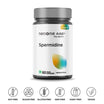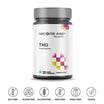The Earth is a gigantic battery that contains a natural electrical charge in the ground. Most of the electrical equipments are connected to the earth for safety and stability; this is called earthing or grounding.
This rule also applies to humans as our body is electrically conductive. This conductive contact between the earth and the human body can stimulate our physiology.
In our fast-paced, technology-driven world, it's easy to lose touch with the natural rhythms of the Earth. We spend most of our time indoors, surrounded by artificial lighting, and electronic devices, and insulated from the grounding effects of nature. However, reconnecting with the Earth's energy can have profound therapeutic benefits. In this blog post, we'll explore the concept of grounding, also known as earthing, and uncover the various techniques and health benefits associated with this natural therapeutic practice.
What is Grounding?
Grounding, in the context of natural therapy, refers to the act of reconnecting with the Earth's electrical energy. It involves direct physical contact with the ground, such as walking barefoot on grass, sand, or soil, lying down on the ground, or submersing oneself in water. When we make direct contact with the Earth's surface, our bodies absorb negatively-charged electrons, which are abundant in the ground. This transfer of electrons has been found to have a harmonizing effect on our bioelectrical systems, helping to restore balance and alleviate various health issues.
Types of Grounding or Earthing
Walking Barefoot
Walking barefoot is one of the simplest and most accessible ways to practice grounding. By walking on natural surfaces like grass, sand, or soil, we allow our feet to directly connect with the Earth. This allows the flow of electrons to transfer from the ground to our bodies. Additionally, walking barefoot outdoors provides an opportunity to connect with nature, promoting a sense of calmness and well-being.
Lying on the Ground
Another effective grounding technique is lying on the ground. Find a comfortable spot in nature, such as a grassy field or a sandy beach, and lay down with your body in direct contact with the Earth's surface. This method allows for a prolonged and intimate connection with the Earth, allowing the transfer of electrons throughout the body. It's a perfect way to unwind, relax, and recharge your energy.
Submersing in Water
Water is a powerful conductor of electricity and can enhance the grounding experience. Submersing yourself in natural bodies of water, such as oceans, lakes, or rivers, can amplify the effects of grounding. The water acts as a conduit for the Earth's electrons, allowing them to flow through your body. This method can be particularly refreshing and invigorating, especially during warm weather.
The Science Behind Grounding
Grounding might seem like a mystical concept, but it is rooted in science. The Earth's surface carries a negative charge and is abundant in free electrons. When we make direct contact with the ground, these electrons flow into our bodies, neutralizing harmful free radicals and reducing inflammation. Research has shown that grounding can have a positive impact on our physiological processes, including improved blood circulation, reduced stress levels, and enhanced immune function.
The human body is an electrical system, and disruptions in this system can lead to various health issues. Chronic inflammation, for example, is linked to many ailments such as cardiovascular disease, arthritis, and chronic pain. By grounding ourselves, we allow the excess positive charge to dissipate, restoring balance and promoting overall well-being.
The Importance of Grounding for Well-being
Modern lifestyles have distanced us from the Earth's electrical energy, and research suggests that this disconnection may contribute to various health issues. Grounding helps restore the natural electrical balance within our bodies, promoting overall well-being. By absorbing the Earth's free electrons, we can neutralize harmful free radicals and reduce chronic inflammation, thus potentially mitigating several health problems.
Researchshows that Grounding offers a wide range of health benefits, both physical and psychological. Here are some of the key advantages associated with this natural therapeutic technique:
Reduced inflammation:
Inflammation is a root cause of various chronic illnesses, including arthritis, cardiovascular disease, and autoimmune conditions. Grounding has been shown to have an anti-inflammatory effect on the body by neutralizing excess free radicals and reducing oxidative stress. This can potentially alleviate inflammation and associated symptoms.
Improved sleep:
Grounding has a profound impact on sleep quality. By restoring the body's electrical balance and reducing stress levels, it helps regulate the sleep-wake cycle, leading to better sleep. Research suggests that grounding can improve sleep duration, reduce nighttime awakenings, and enhance overall sleep quality.
Enhanced mood and mental well-being:
Direct contact with the Earth's energy has a grounding effect on our emotions, reducing stress, anxiety, and depression. It promotes a sense of calmness and balance.
Increased energy levels:
If you often feel fatigued or lack energy, grounding can help revitalize your body. By absorbing the Earth's energy, grounding promotes a sense of rejuvenation, increases vitality, and improves overall energy levels. Many individuals report feeling more energized and mentally focused after incorporating grounding into their routine.
Accelerated healing:
The anti-inflammatory effects of grounding can facilitate the healing process, helping to recover from injuries and surgeries more quickly.
Improved cardiovascular health:
Grounding has been associated with improved blood circulation and reduced blood viscosity, potentially lowering the risk of cardiovascular diseases.
Stress Reduction and Emotional Balance:
The fast-paced nature of modern life often leaves us feeling stressed and overwhelmed. Grounding offers a natural and effective way to manage stress by promoting relaxation and emotional balance. By connecting with the Earth's energy, grounding helps regulate cortisol levels, the hormone associated with stress and promotes a sense of calmness and well-being.
Enhanced immune function:
A robust immune system is essential for overall health and disease prevention. Grounding has been found to have positive effects on immune function by reducing inflammation, promoting better sleep, and reducing stress. By supporting the immune system, grounding may help protect against illness and promote faster healing.
Conclusion
Grounding, or earthing, is a natural therapeutic technique that offers a multitude of health benefits. By reconnecting with the Earth's electrical energy, we can restore balance to our bioelectrical systems, reduce inflammation, improve sleep, boost mood, and enhance overall well-being. With simple practices like walking barefoot, lying on the ground, or submersing in water, we can easily incorporate grounding into our everyday lives. So, take a moment to step outside, feel the Earth beneath your feet, and experience the profound healing power of grounding.
Reference:
- https://www.tandfonline.com/doi/full/10.2147/JIR.S69656
- https://www.ncbi.nlm.nih.gov/pmc/articles/PMC4378297/
- https://www.ncbi.nlm.nih.gov/pmc/articles/PMC3576907/
- https://www.ncbi.nlm.nih.gov/pmc/articles/PMC5542808/



















Leave a comment
This site is protected by reCAPTCHA and the Google Privacy Policy and Terms of Service apply.